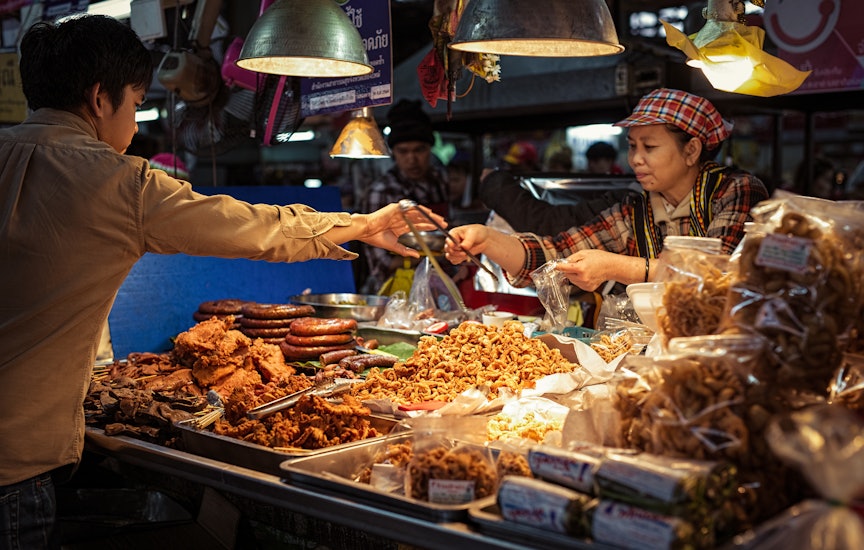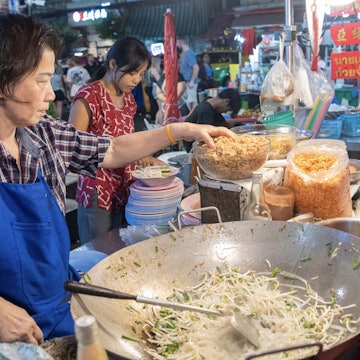
Bangkok's 9 best dishes: a bite-sized guide to Thai cuisine in the capital

Jun 23, 2025 • 8 min read

These are the meals every visitor to Bangkok should try. Brostock/Getty Images
One of the best things about food in Thailand is its vast range of dishes. Thais have always been good at adopting influences from elsewhere and putting their own spin on things, and nowhere is that talent more obvious than when looking at a Thai menu. There, among its fried noodles, stir-fries and clear soups lie elements filched from China; its char grilled meats on skewers betray influences from Indonesia and Malaysia; and in its curries come inspiration from places as far-flung as India and Persia.
Not surprisingly, the Thai capital of Bangkok represents the kingdom’s beating heart: politically, economically, and of course, culinarily. This makes the “City of Angels” — a historical crossroads where many of Thailand’s most famous dishes were born — a must-see among foodie travelers with a love of chilies and even bigger appetites. Below, you’ll find the best dishes to seek out if you want to sample all that Thai cuisine has to offer.
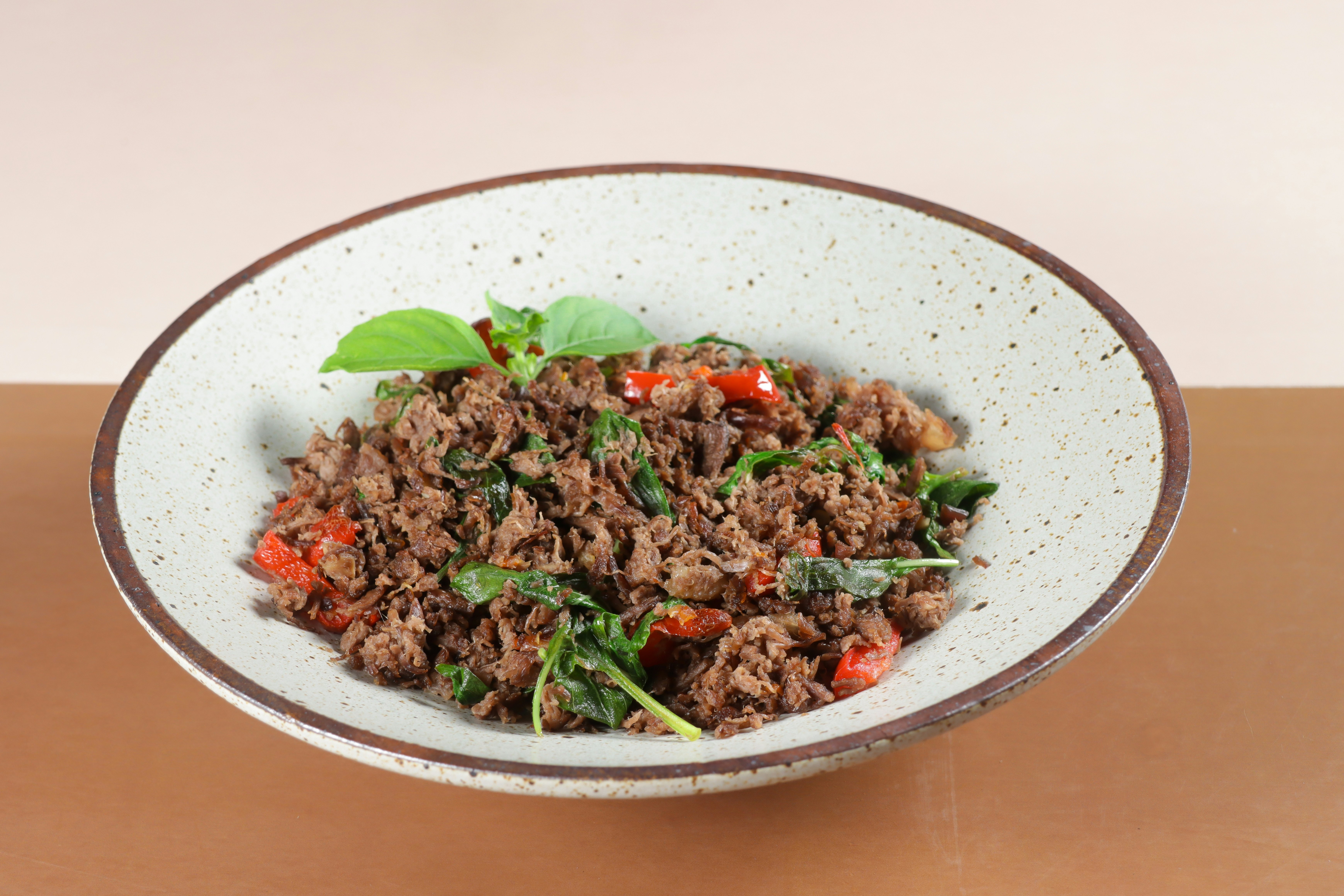
1. Pad kaprao (holy basil stir-fry)
Pad kaprao is considered Thailand’s most popular meal, ubiquitous on breakfast and lunch tables and accessible in every corner of the kingdom. What sets this dish apart from Thai food’s other stir-fries is the star ingredient, bai kaprao (holy basil), a form of Thai basil which accentuates the spice instead of softening it as fresh coriander would do.
While chicken, pork and beef are common variations, they are not the only versions out there. You can basically make this dish with anything. What’s important are the inclusions of garlic, holy basil, and of course, chilies, with the whole shebang typically topped with a perfectly fried sunny-side-up egg to help tone down the heat.
Where to try pad kaprao: Like pasta in Italy, it’s tough to find a bad rendition of this dish in Bangkok. That said, some places do stand out. Gapow Tapae draws long lines to its doors at lunchtime, especially for its pork pad kaprao. Another queue magnet is Phed Mark, owned by Mark Wiens of YouTube fame, whose stir-fries come in spice levels ranging from 1 to 5 (very spicy).
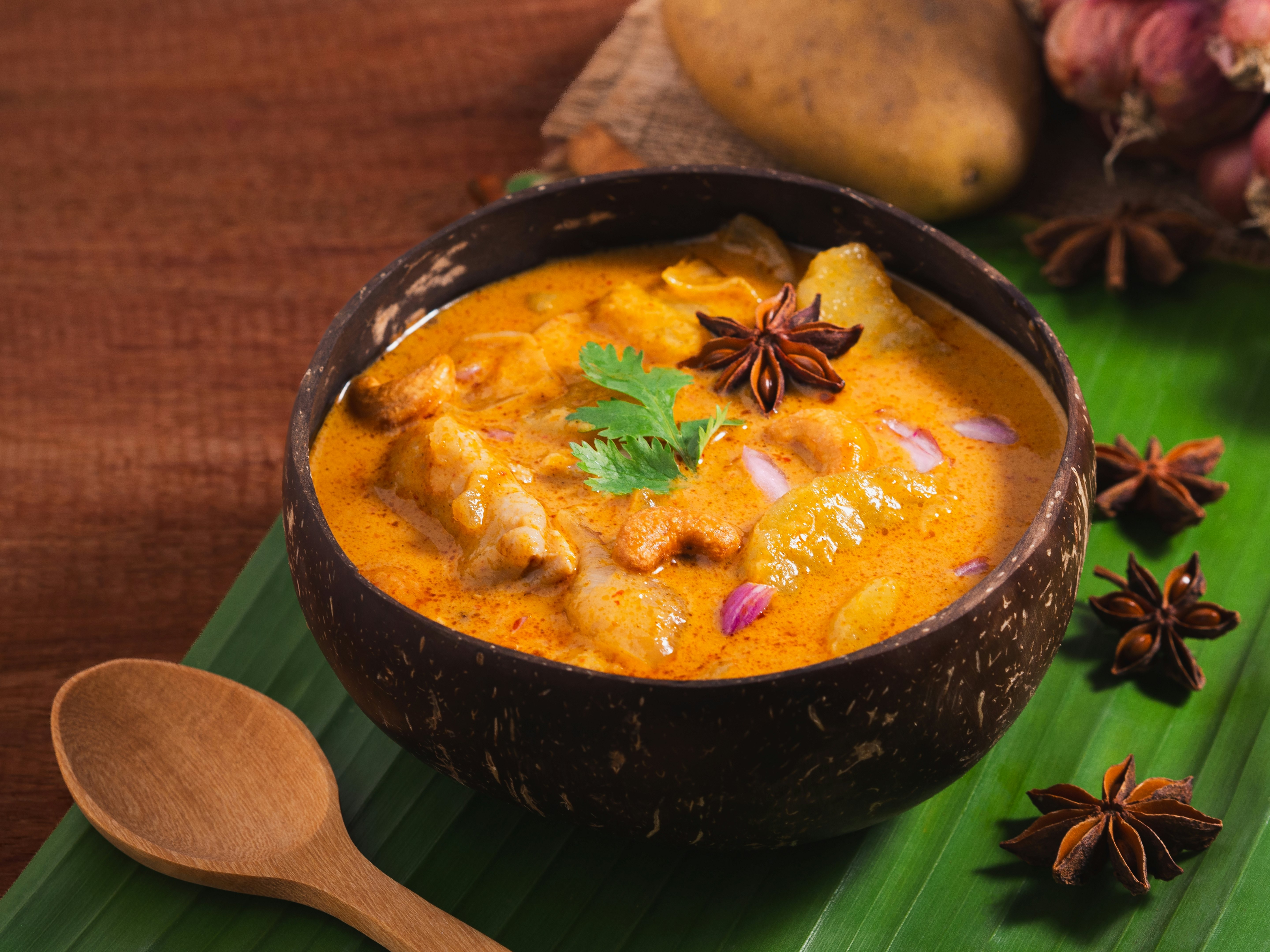
2. Gaeng massaman (massaman curry)
Frequently mistaken for a Southern Thai dish, this unctuous curry inflected with Indian bay leaves and nutmeg is actually believed to hail from Persia, from where it was introduced to the royal court by a foreign emissary. The recipe eventually underwent various permutations at the hands of royal cooks before reaching its current, more Thai-icized form.
Still considered something of a foreign dish thanks to its name — derived from “Muslim” curry — this dish is milder, spice-wise, than some of its Thai cousins. All the same, making a massaman curry from scratch continues to be a time-consuming, labor-intensive job. As a result, finding one on the street is like buying a winning lottery ticket.
Where to try massaman curry: A great version of this curry can be found at streetside Halal eatery Yommana Mutton Shop, close to Ban Au Mosque. If you arrive early enough, you will also be able to score a nice goat biryani.
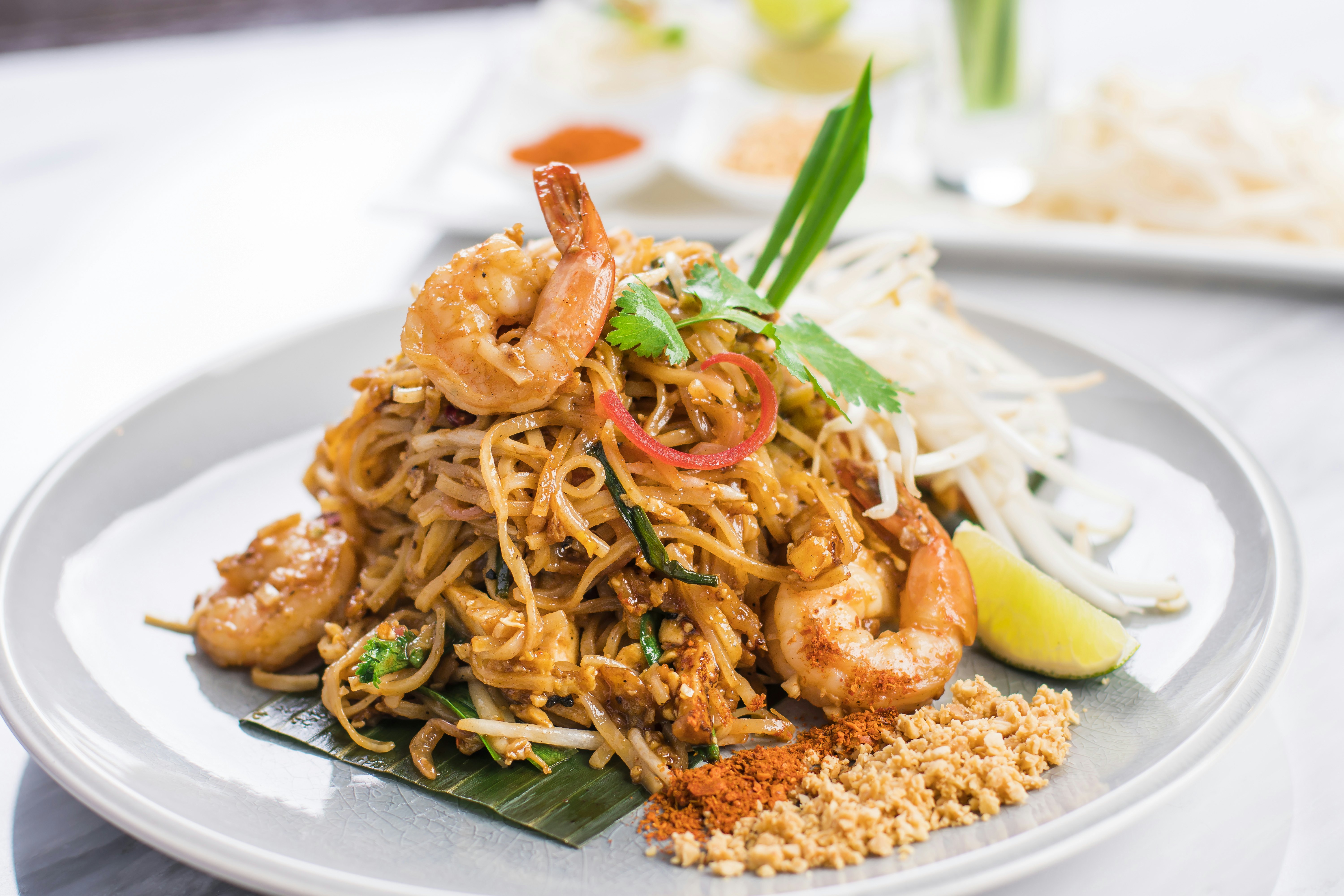
3. Pad Thai
Of course, no list of Bangkok’s greatest dishes is complete without its most famous: pad Thai. Although some historians say this stir-fried noodle dish has existed since the time of King Rama I (albeit in a different form), others say that pad Thai was born in a cooking contest held in mid-20th-century Bangkok in an attempt to make a Chinese ingredient (noodles) more “Thai." This was achieved with stereotypically Thai ingredients: fish sauce, lime juice, tamarind juice, palm sugar, and of course, a nice sprinkling of chili powder. As for the purported winner of the contest? The wife of a government minister, of course.
Where to try pad Thai: Instead of going to a touristy spot where many orders of noodles are cooked together in big vats, why not try a place that makes each dish individually to order? Baan Phadthai serves regional variations of the country’s best-known dish, including versions with river prawns, mud crab, or grilled pork.

4. Tom yum (spicy lemongrass soup)
This spicy soup scented with lemongrass, galangal and makrut lime leaves is a mainstay on Thai menus abroad, but its impact on Thai food is frequently underestimated. Considered among the Thai culinary lexicon’s oldest dishes, tom yum boasts quite a few regional variations, all taking advantage of local ingredients like king mackerel or tiger prawns. More modern types of tom yum add coconut milk or even condensed milk to the broth, but purists say the clear-broth version is the most authentic.
Where to try tom yum: Although known more for her crabmeat omelet, Jay Fai makes one of the most well-regarded bowls of tom yum soup in the city. If braving a long line is not your thing, you can also try tom yum in a flaming doughnut-shaped vat (mor fai) at seafood specialist Sornthong.
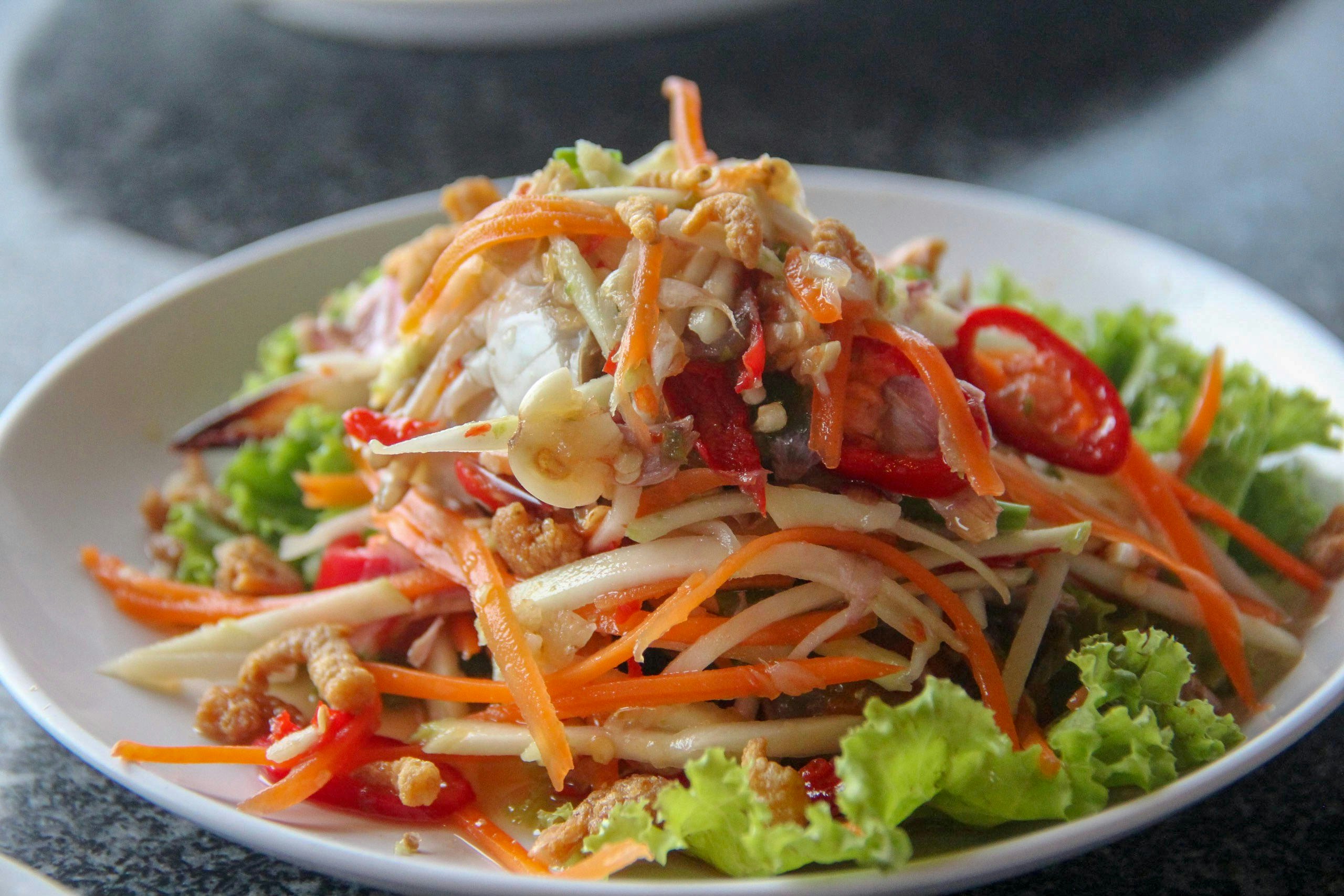
5. Som tam Thai (Central Thai-style green papaya salad)
Today this spicy, tart salad is one of Thailand’s most popular dishes, but its ancestor, thum mak hoong, is actually from northern neighbor Laos. Forming a part of Northeastern Thailand’s core cuisine along with grilled meat and sticky rice, som tum is popularly made with green papaya, but it can basically be made with any sour fruit or vegetable.
Although the Northeastern Thai (Isan) style of som tam is made with pla rah (fermented fish sauce), the Central Thai-style salad is made with lime juice and palm sugar, ingredients that weren’t traditionally grown in Isan. Isan vendors who moved to Bangkok in the mid-1900s found that Bangkokians did not like pla rah and created a sweeter, tarter salad just for them, garnished with central Thai ingredients like peanuts and dried shrimp.
Where to try som tam: The original vendors of this dish sold it around Victory Monument, where the rickshaw drivers at the time — who mostly came from Isan — all congregated. Today, som tam is everywhere, including at the popular Som Tam Jay So in the central business district, and Somtam Nua in Siam Square.
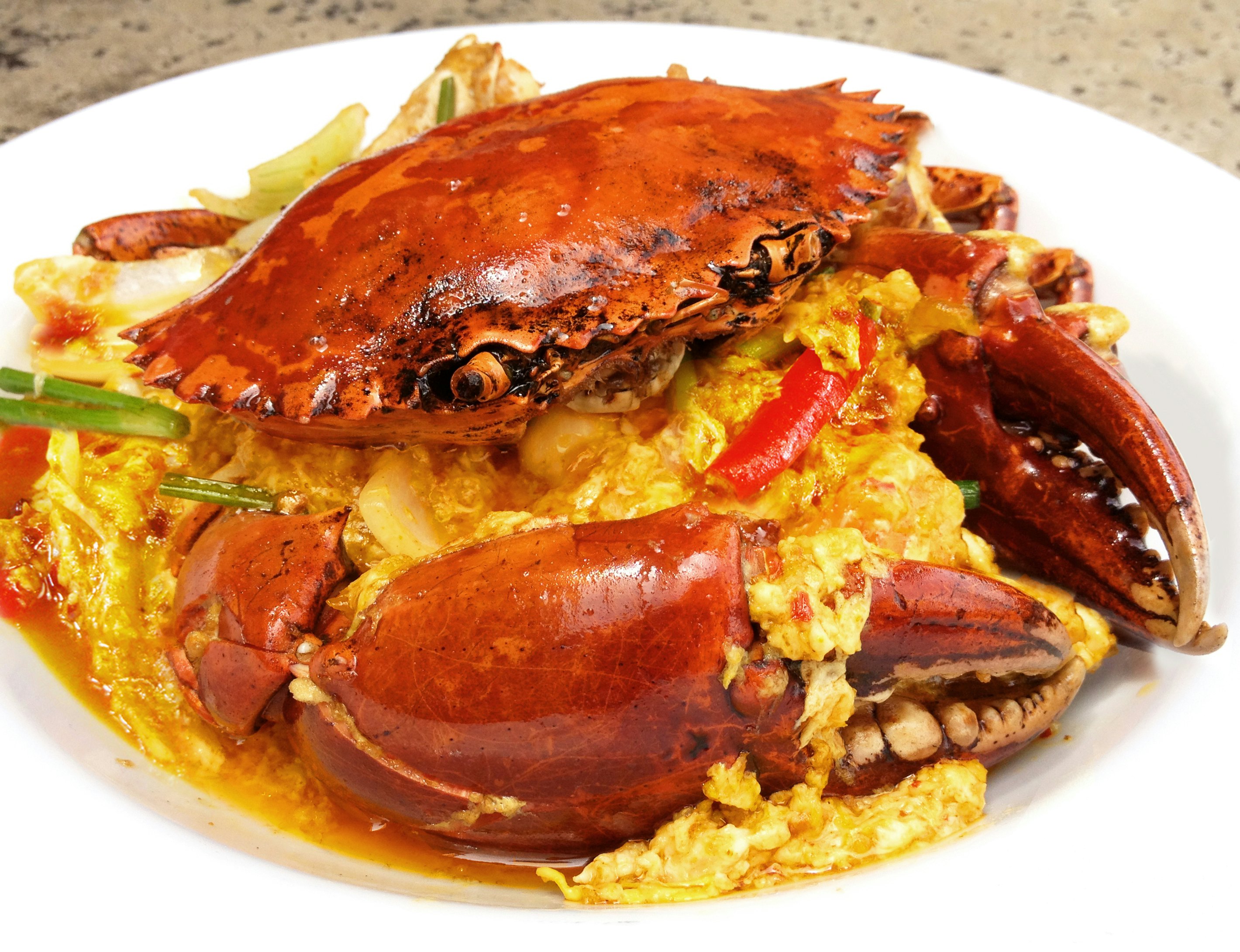
6. Puu pad pong kari (stir-fried crab in curry sauce)
Often overlooked on Thai menus, this stir-fry flaunts fresh jumbo lump crabmeat in a gooey sauce of egg, evaporated milk and curry powder. A popular standard on Thai seafood tables melding Chinese technique with Thai flavors, it was invented by the original owners of Somboon Seafood, today a longstanding Thai-Chinese chain of restaurants scattered across Bangkok.
Where to try stir-fried crab in curry sauce: Naturally, one should try this dish at its birthplace, Somboon Seafood, preferably at its original outpost in Sam Yan neighborhood, long known as a center for delicious Thai seafood.
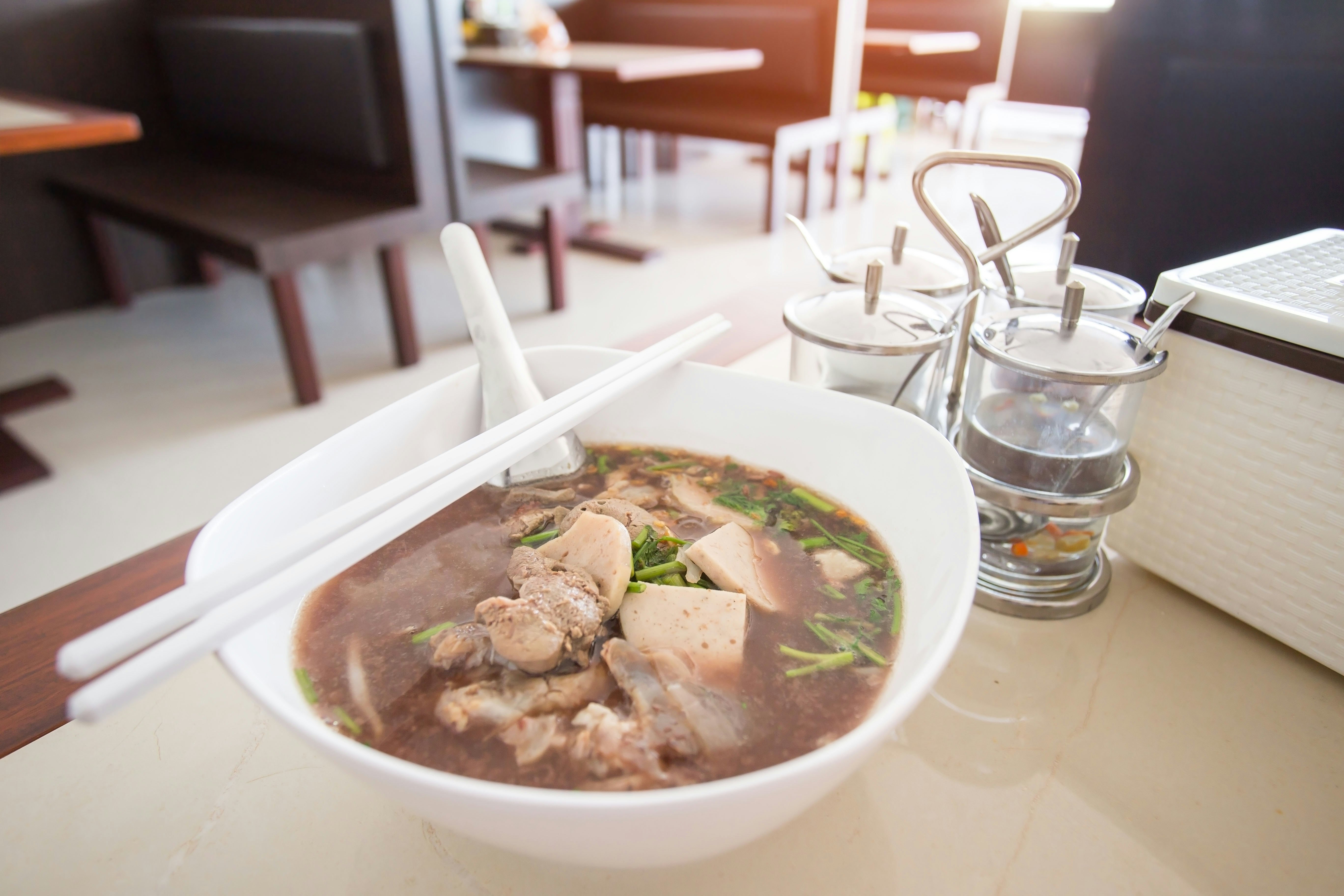
7. Guay thiew ruea (boat noodles)
Originally born on the canals of former capital Ayutthaya, boat noodles can now be found all over the kingdom. All the same, the noodle joints on “Boat Noodle Alley," in the shadow of Bangkok’s Victory Monument, are arguably the best-known today. Traditionally served in tiny bowls that could theoretically fit on a small rowboat, these fusion-y noodles are seasoned with typical Chinese ingredients like white pepper, cinnamon and star anise, along with Thai ingredients like fish sauce, galangal and coriander roots. However, the secret ingredient here is a dash of pig or cow’s blood to add that extra oomph to the broth.
Where to try boat noodles: Of the various vendors crowding Boat Noodle Alley, Baan Kuay Tiew Ruathong is arguably the most popular thanks to its rounded and richer broth. Happily, it also sports air-conditioning. If you prefer a more upscale experience in a more accessible location, Thongsmith is a chain that also offers a decent bowl of boat noodles and can be found in various shopping malls.

8. Satay
Although commonly linked with Thailand, these juicy skewers of chargrilled meat are actually adopted from Malay cuisine (as is anything else featuring peanut sauce). The best versions of this dish are grilled outdoors over charcoal, infusing the meat with a smoky aroma and charring its edges with an irresistible concentration of flavor. Slightly spicy peanut sauce and a sweet cucumber ajad (relish) round out this dish, a snack that eats like a meal. You can add an order of white toast to dip into the sauce that’s left if you’re feeling fancy.
Where to try satay: Surprisingly, the best version of this dish can be found in Chinatown, particularly Jay Eng, which offers pork, chicken, beef, shrimp and tofu varieties.

9. Khao niew mamuang (mango sticky rice)
Who knew that sweet sticky rice topped with fruit could be so delicious? During the Thai summer of March to May, city streets are heaving with this dish, vendors displaying different varieties of ripe yellow mangos on countertops along the sidewalk. Fortunately, you can now find this dish all year round, most commonly with juicy nam dok mai mangoes.
Where to try mango sticky rice: There are two major mango sticky rice rivals on either side of the city: the more famous, Kor Panich, has been around for over 90 years and is famed for its delicious sticky rice (khao niew moon). The upstart Mae Varee is beloved by nearby Sukhumvit residents, who believe their sticky rice topped with coconut cream is more fragrant.





